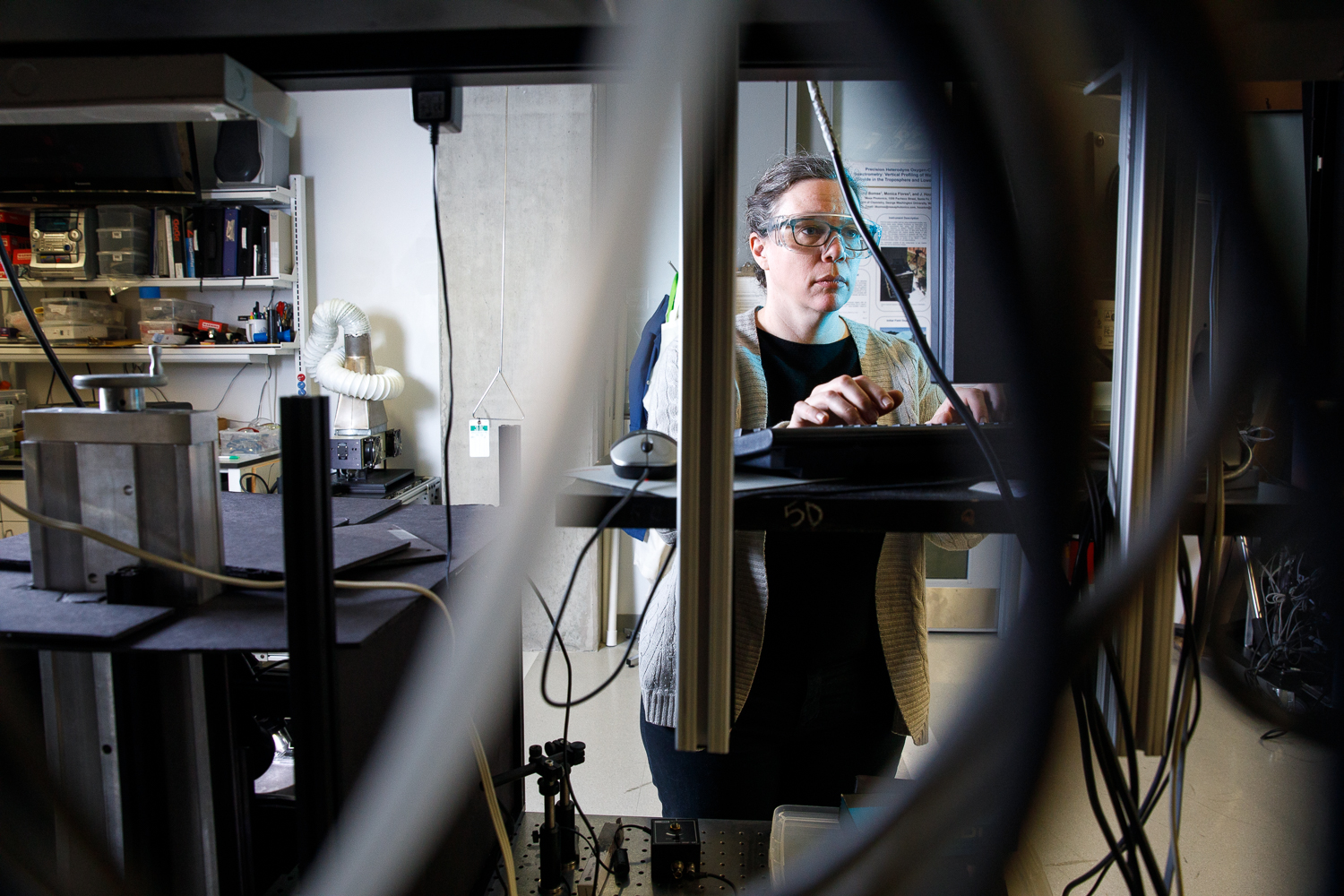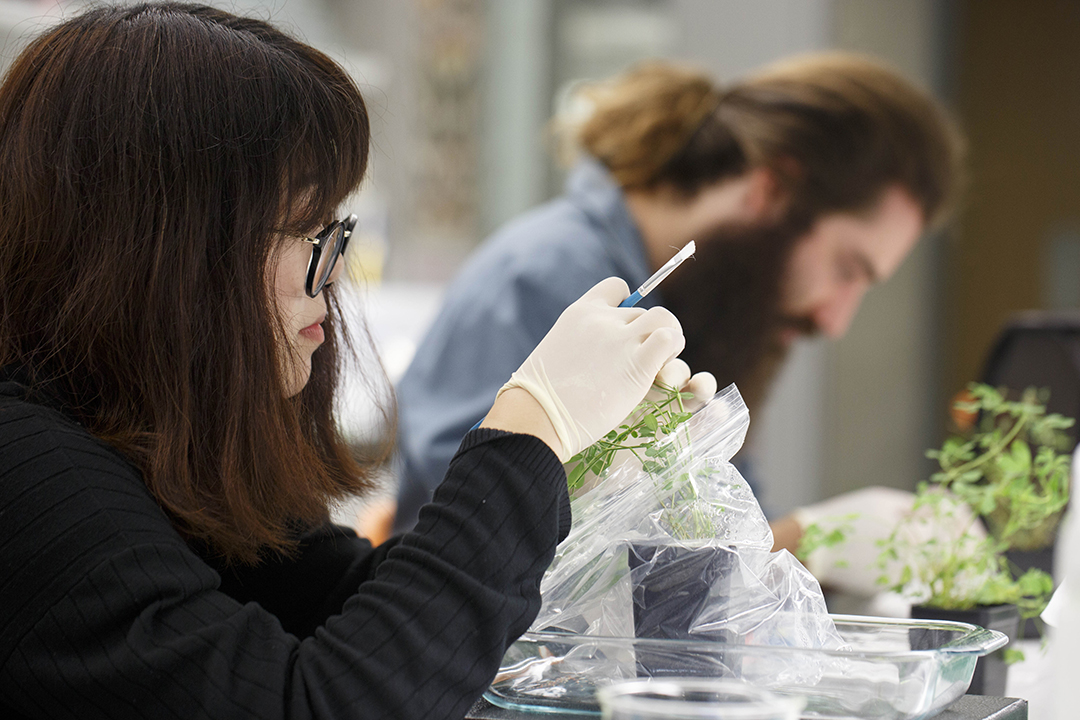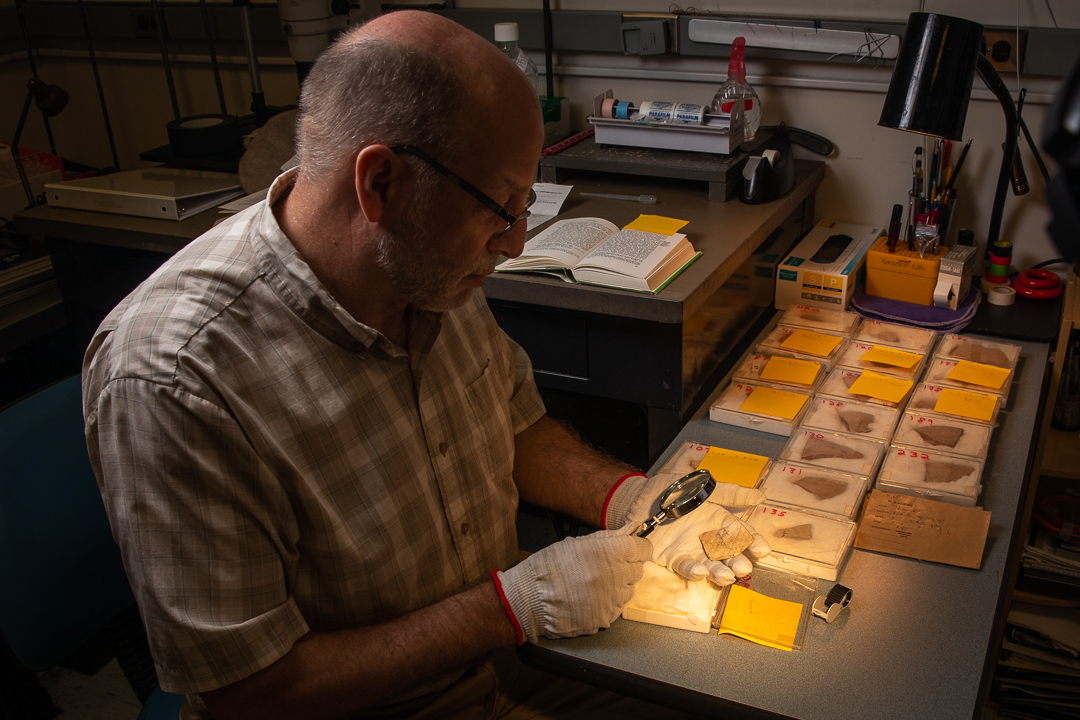By Kristen Mitchell
The black ink used in Asian art was chosen by each artist with particular care. The subtle undertones of blue or brown pigment add a layer of depth to a painting or inscription, but until recently, scholars could not analyze much of the information contained in these brushstrokes.
Jennifer Giaccai, a George Washington University Ph.D. candidate in chemistry, is using a non-destructive chemical analysis technique to study the properties of inksticks, a solid ink tool common in Asia made of carbon-based soot and animal glue. She aims to determine whether it’s possible to differentiate how inksticks were made, which has deep historical significance in China, Japan and Korea.
“Inksticks are not treated as your ordinary tube of paint—they actually have a lot of importance to them,” Ms. Giaccai said. “These would be given as a gift from one scholar to another, or they can be made in honor of someone, and it would say that on the inkstick.”
Until the late nineteenth century, inksticks were primarily made in two ways. They can be made from the soot collected by burning traditional oil lamps—a method called “lamp black”--or from burning dead pine tree roots that have been aged for several years. Pine soot is thought to be finer than lamp black and the coloring has a bluish cast, Ms. Giaccai said.
She is using Raman spectroscopy to study inkstick properties and hopes to find a way for experts to determine whether artists used pine soot or lamp black inks for their work. Using the Raman probe, Ms. Giaccai points a laser at a specific point on a sample of ink. The laser is scattered by molecules in the sample and that data is collected by a lens in the probe. Ms. Giaccai then interprets that information to determine the makeup of the sample.
This technique is ideal for studying art because it doesn’t require the sample to be removed from a work for analysis. Raman spectroscopy can be done on the surface of a painting or art object.
“From an art point of view, Raman is really exciting,” Ms. Giaccai said. “Raman has been used on works of art for a number of years, but people have not generally looked at the black pigments until the past five years or so, partly because the spectra from the Raman analyses of many black pigments are all very similar.”
Ms. Giaccai’s passion for conservation started when she was an undergraduate student in chemistry. She read about how Italian chemists were trying to determine whether the colors on the ceiling of the Sistine Chapel were blackened from centuries of candle smoke, or if artist Michelangelo had intended them to be muted.
She was riveted by the debates over the paint’s materials and decided to pursue a career in art conservation.
Her first job at a museum was at the Smithsonian's National Museum of Asian Art, the Freer Gallery of Art and the Arthur M. Sackler Gallery, where she works today as a conservation scientist. She came to GW as a mid-career professional to study combustion, the process of burning something, and get to know “the ins and outs of soot.”

Ms. Giaccai, a Ph.D. candidate in chemistry, prepares a sample of pine soot for examination using Raman spectroscopy. (Harrison Jones/ GW Today)
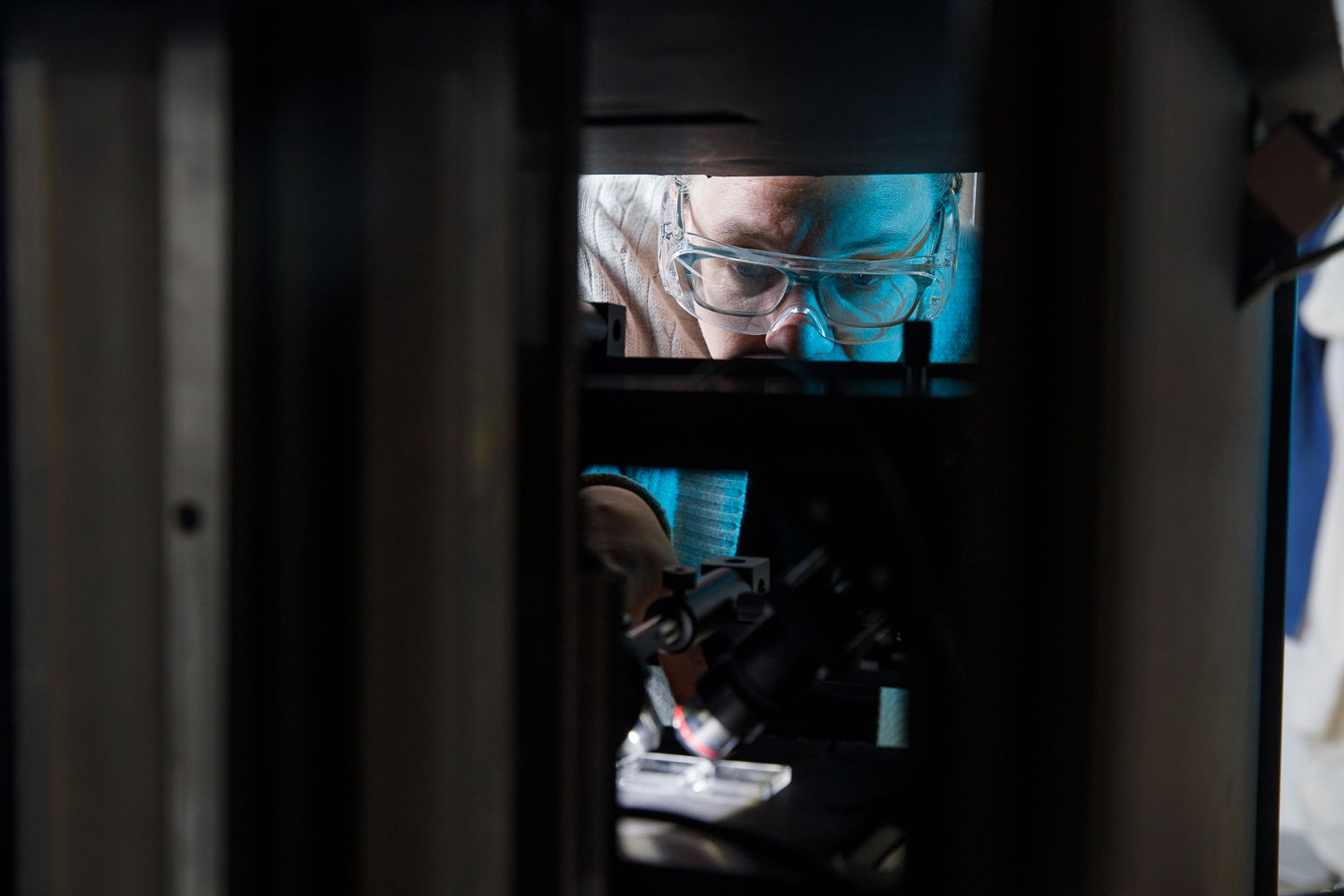
Ms. Giaccai hopes to find a way for experts to determine whether artists used pine soot or lamp black inks for their work. (Harrison Jones/ GW Today)
The Chemistry of Compromise
Ms. Giaccai works in the lab of J. Houston Miller, a chemistry professor in the Columbian College of Arts and Sciences, who focuses on soot in combustion and atmospheric chemistry. On her first visit to the lab, Ms. Giaccai expressed her interest in exploring if Raman spectroscopy could be used to analyze soot in traditional and modern inks used in Asian art.
“I told her then—and again and again—that although very scientifically and culturally interesting, that was not what the lab was funded to do and suggested projects more in line with our project supported by the National Science Foundation,” he said. “I also suggested that if she found some funding to pursue the Raman work on inks, and eventually museum collection pieces, that would be great.
“As it turns out, she has done both.”
Ms. Giaccai received the Smithsonian Scholarly Studies Award to pursue her research. This allowed her to travel to Asia twice last year to talk with people making soots and collect samples. These experiences helped her gain insight on both ancient and modern processes. Many of the ancient processes were lost when inkmakers were shuttered during China’s Cultural Revolution in the 1960s and ’70s. Many of these inkmakers were located in Anhui province.
“They're trying to rediscover their cultural heritage after having that gap of a couple decades where that was cut off and not encouraged,” Ms. Giaccai said.
Being able to differentiate between black ink sources could have a significant impact on conservation efforts, Ms. Giaccai said. Her research aims to crack important questions about individual works of art, such as whether certain parts of a piece are original, or if an artist favored a specific ink or used a variety of ink types. That knowledge would generate a greater understanding of individual works.
While Ms. Giaccai is still early in the research process, she has found differentiation between lamp black and pine soot made using modern methods to be a challenge. Today, inksticks can be made from carbon black, the same soot-based pigment that is used in car tires and laser printer toner, in addition to traditional methods.
During the next phase of her research, Ms. Giaccai plans to make her own pine soot samples for testing. She also hopes to use Raman spectrometry on paintings at the Smithsonian's National Museum of Asian Art.
Her dissertation will focus more on fundamental questions of combustion, which overlaps with her work on inksticks. She plans to complete and defend her dissertation during the next academic year.
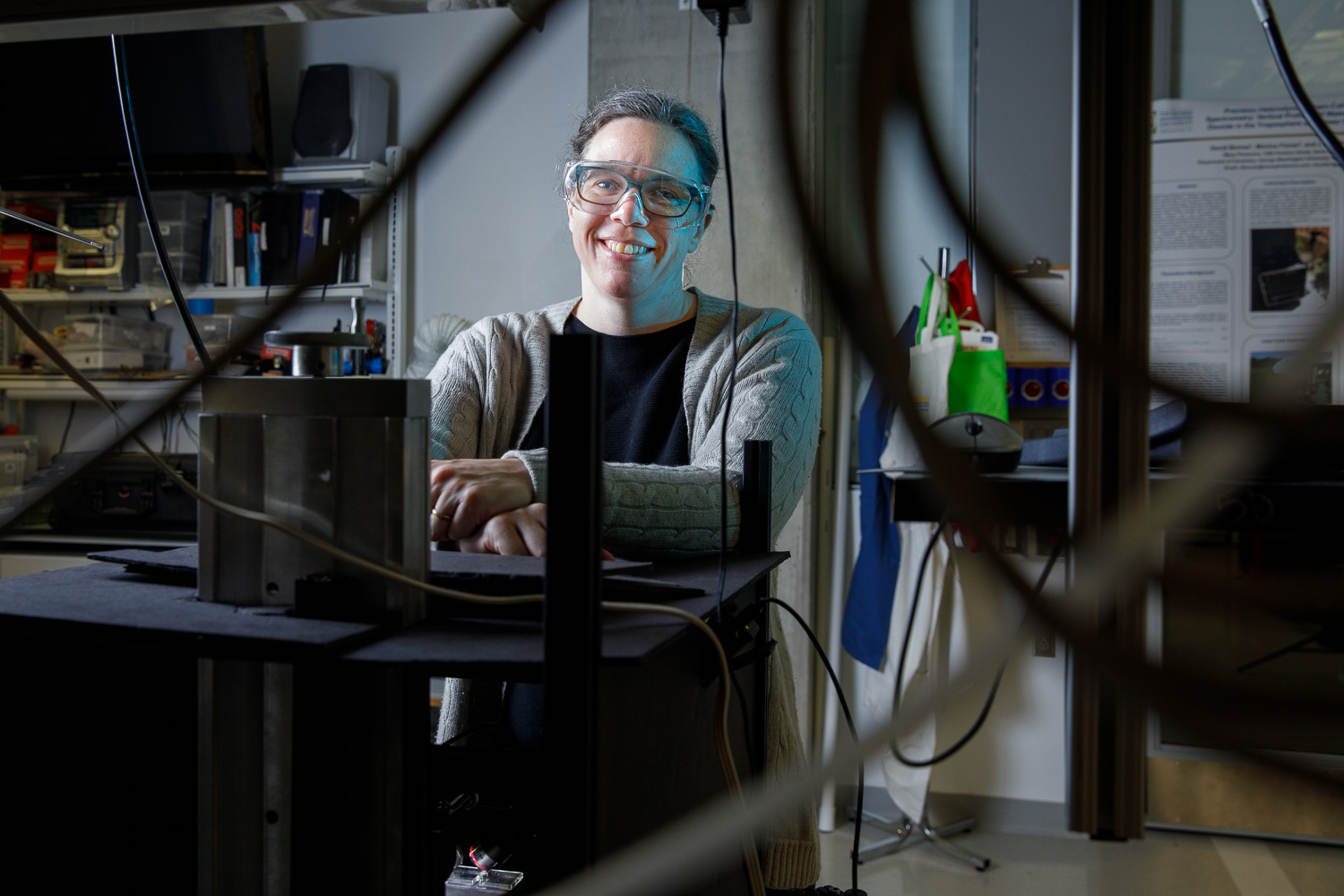
Ms. Giaccai’s dissertation will focus on fundamental questions of combustion, which overlaps with her work on inksticks. (Harrison Jones/ GW Today)


